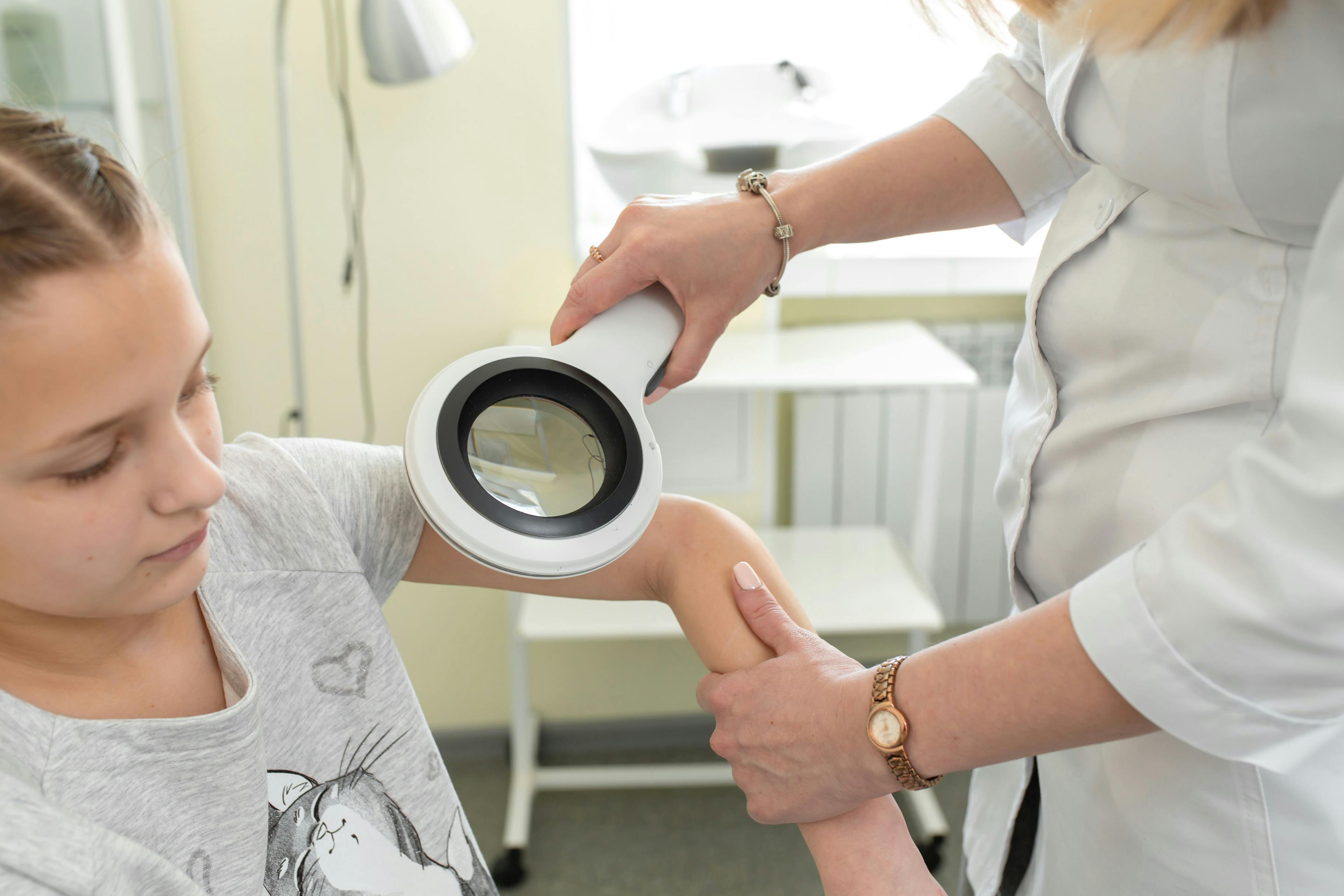- Acne
- Actinic Keratosis
- Aesthetics
- Alopecia
- Atopic Dermatitis
- Buy-and-Bill
- COVID-19
- Case-Based Roundtable
- Chronic Hand Eczema
- Chronic Spontaneous Urticaria
- Drug Watch
- Eczema
- General Dermatology
- Hidradenitis Suppurativa
- Melasma
- NP and PA
- Pediatric Dermatology
- Pigmentary Disorders
- Practice Management
- Precision Medicine and Biologics
- Prurigo Nodularis
- Psoriasis
- Psoriatic Arthritis
- Rare Disease
- Rosacea
- Skin Cancer
- Vitiligo
- Wound Care
News
Article
Dermatology Times
Treating and Preventing Postinflammatory Hypo- and Hyperpigmentation
Author(s):
UV exposure or trauma to the skin, such as blistering and ulceration, can lead to changes in skin pigmentation and appearance.
Postinflammatory hypopigmentation and hyperpigmentation are common inflammatory dermatoses and dyschromia that can be attributed to several different causes and can lead to changes in the skin’s overall appearance. This includes loss or gain of pigment, which can be either partial, or total in instances of pigment loss, in nature.
this_baker/AdobeStock

These conditions occur significantly more frequently and with greater severity in patients with darker skin phototypes, such as Fitzpatrick skin types IV through VI. In fact, dyschromia is one of the most common reasons patients with skin of color visit a dermatologist, and a 2007 study1 found that pigmentary disorders are the second most common dermatoses in Black patients.
Additionally, these changes in pigmentation may be more noticeable in patients with darker skin phototypes.2,3 Because of the cosmetic implications of pigmentation changes, patients with postinflammatory hypo- or hyperpigmentation may experience numerous psychosocial impacts due to perceived stigma and the conditions’ effects on self-esteem and health-related quality of life.3
To treat patients with postinflammatory hypo- and hyperpigmentation, it is important to recognize the underlying causes. It is also crucial to be cognizant of preventive measures in instances where pigment changes can be anticipated and prevented.
Causes
Postinflammatory hypo- and hyperpigmentation can be linked to several etiologies. Inflammatory dermatoses, ultraviolet (UV) light exposure, and cutaneous injuries such as blisters, ulcerations, and infections of the skin can lead to pigment changes.2,3,4
Common causes of postinflammatory hyperpigmentation include frequently occurring skin conditions such as acne vulgaris, atopic dermatitis, and impetigo. According to results of a 2002 study, 65.3% of Black patients developed postinflammatory hyperpigmentation as a result of acne vulgaris.2 Researchers have also found that postinflammatory hyperpigmentation may be a major clinical finding in cases of pseudofolliculitis barbae (PFB), a condition with a high prevalence in Black patients, with 90.1% of Black and Hispanic patients with PFB reporting hyperpigmentation as a symptom and comorbidity.2
Postinflammatory hypopigmentation can be caused by underlying dermatologic conditions such as extragenital lichen sclerosus, lichen striatus, pityriasis alba, pityriasis lichenoideschronica, and progressive macular hypomelanosis. Inflammatory diseases such as discoid lupus erythematosus and scleroderma, infectious diseases such as acrodermatitis chronica atrophicans, and other conditions, including iatrogenic hypopigmentation, leucodermasyphiliticum, mycosis fungoides, and pityriasis versicolor alba, can be causes of postinflammatory hypopigmentation.3 Much like hyperpigmentation, it can also be associated with excessive UV irradiation and sun exposure.1,3,4
Treatment and Prevention
Treating and managing postinflammatory hypo- and hyperpigmentation is dependent on the underlying dermatosis or disease causing pigment changes. It is important to note, however, that treatment methods may lead to irritation and inflammation, leading to a cyclical pattern of postinflammatory pigment changes due to exacerbation.2
Potential treatment options for patients with postinflammatory hypopigmentation include laser therapy, oral photochemotherapy, phototherapy, topical calcineurin inhibitors, topical corticosteroids, topical steroids, and topical tacrolimus, all of which are dependent upon the underlying cause of hypopigmentation and have demonstrated efficacy in treating patients with specific indications.1
First-line therapies for postinflammatory hyperpigmentation include topical depigmenting agents, such as hydroquinone 4%. Patients with a hydroquinone allergy may respond well to other first-line therapies, such as azelaic acid, mequinol, or tazarotene. If first-line therapies are ineffective or produce suboptimal results, additional treatment options include combination therapy, chemexfoliation, or laser and light therapies. Retinoids may be effective alone or in combination with other therapies due to their skin-lightening capabilities, and superficial chemical peels have been proven to be well tolerated and effective in lightening hyperpigmented skin.2
Photoprotection can be recommended as a management or treatment option as well as a preventive measure in cases where pigment gain or loss may come as a result of increased sun exposure and enhanced photosensitivity, as UV irradiation is capable of further exacerbating and darkening preexisting hyperpigmentation.2
Promising therapeutic options for postinflammatory hypo- and hyperpigmentation are on the horizon. Depigmentizing agents such as aloesin, dioic acid, topical 5% methimazole, undecylenoyl phenylalanine 2%, and several other agents with depigmenting properties have demonstrated both safety and efficacy in preliminary trials.2
References
- Alexis AF, Sergay AB, Taylor SC. Common dermatologic disorders in skin of color: a comparative practice survey. Cutis. 2007;80(5):387-394.
- Davis EC, Callender VD. Postinflammatory hyperpigmentation: a review of the epidemiology, clinical features, and treatment options in skin of color. J Clin Aesthet Dermatol. 2010;3(7):20-31.
- Rao M, Young K, Jackson-Cowan L, Kourosh A, Theodosakis N. Post-inflammatory hypopigmentation: review of the etiology, clinical manifestations, and treatment options. J Clin Med. 2023;12(3):1243. doi:10.3390/jcm12031243.
- D’Orazio J, Jarrett S, Amaro-Ortiz A, Scott T. UV radiation and the skin. Int J Mol Sci. 2013;14(6):12,222-12,248. doi:10.390/ijms140612222

Newsletter
Like what you’re reading? Subscribe to Dermatology Times for weekly updates on therapies, innovations, and real-world practice tips.

























